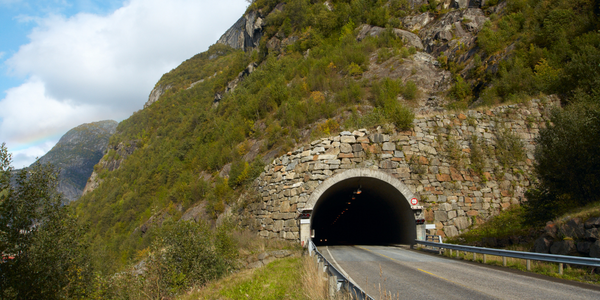技术
- 应用基础设施与中间件 - 数据交换与集成
- 应用基础设施与中间件 - 中间件、SDK 和库
适用行业
- 建筑物
- 建筑与基础设施
适用功能
- 物流运输
- 产品研发
用例
- 最后一英里交付
- 租赁金融自动化
服务
- 系统集成
关于客户
Gen Re 是为人寿/健康和财产/伤亡保险行业提供再保险解决方案的领先提供商。该公司通过全球 40 多个办事处组成的网络,在所有主要再保险市场都有代表。 Gen Re 拥有多年来构建的复杂多样的技术环境,包括大型机应用程序、Lotus Notes 应用程序、打包软件产品以及在 Microsoft Azure 上运行的内部云应用程序。该公司的目标是实现 IT 架构现代化、减少技术债务并提高开发流程的敏捷性。
挑战
Gen Re 是一家领先的再保险解决方案提供商,正在努力应对复杂的 IT 架构,其中包括定制开发和打包的软件应用程序、遗留的 Lotus Notes 应用程序以及各种流程自动化技术。该公司还有在 Microsoft Azure 上运行的内部云应用程序。多年来建立的这种多样化的技术格局导致了应用程序之间的孤岛,并且在某些情况下导致了重复数据的重新加密。 Gen Re 的目标是减少技术债务、加快开发速度并提高敏捷性。该公司希望采用敏捷开发方法,快速迭代开发和用户的持续反馈。然而,现有的技术格局和遗留系统对实现这些目标提出了重大挑战。
解决方案
经过详尽的评估后,Gen Re 选择 OutSystems 作为其战略性低代码应用程序开发平台。该公司于 2021 年 5 月组建了开发团队,最初对现有开发人员进行交叉培训并招募更多人才。该团队在前三个月定义了参考架构并建立了可重用模块的基础,包括身份验证和授权标准、文件存储和 Documentum 集成,以及与众多核心系统和 Office 365 的集成。第一波应用程序于 9 月份上线2021 年将推出更复杂的应用程序,2022 年 1 月将推出第三波关键业务、时间敏感的项目。Gen Re 现在使用 OutSystems 来构建集成多个系统的新颖解决方案,包括 Azure Active Directory、Office 365、 Documentum、RPA (Automation Anywhere)、SAP、Dynamics 365 和众多内部应用程序。
运营影响
数量效益

Case Study missing?
Start adding your own!
Register with your work email and create a new case study profile for your business.
相关案例.

Case Study
Energy Saving & Power Monitoring System
Recently a university in Taiwan was experiencing dramatic power usage increases due to its growing number of campus buildings and students. Aiming to analyze their power consumption and increase their power efficiency across 52 buildings, the university wanted to build a power management system utilizing web-based hardware and software. With these goals in mind, they contacted Advantech to help them develop their system and provide them with the means to save energy in the years to come.

Case Study
IoT System for Tunnel Construction
The Zenitaka Corporation ('Zenitaka') has two major business areas: its architectural business focuses on structures such as government buildings, office buildings, and commercial facilities, while its civil engineering business is targeted at structures such as tunnels, bridges and dams. Within these areas, there presented two issues that have always persisted in regard to the construction of mountain tunnels. These issues are 'improving safety" and "reducing energy consumption". Mountain tunnels construction requires a massive amount of electricity. This is because there are many kinds of electrical equipment being used day and night, including construction machinery, construction lighting, and ventilating fan. Despite this, the amount of power consumption is generally not tightly managed. In many cases, the exact amount of power consumption is only ascertained when the bill from the power company becomes available. Sometimes, corporations install demand-monitoring equipment to help curb the maximum power demanded. However, even in these cases, the devices only allow the total volume of power consumption to be ascertained, or they may issue warnings to prevent the contracted volume of power from being exceeded. In order to tackle the issue of reducing power consumption, it was first necessary to obtain an accurate breakdown of how much power was being used in each particular area. In other words, we needed to be able to visualize the amount of power being consumed. Safety, was also not being managed very rigorously. Even now, tunnel construction sites often use a 'name label' system for managing entry into the work site. Specifically, red labels with white reverse sides that bear the workers' names on both sides are displayed at the tunnel work site entrance. The workers themselves then flip the name label to the appropriate side when entering or exiting from the work site to indicate whether or not they are working inside the tunnel at any given time. If a worker forgets to flip his or her name label when entering or exiting from the tunnel, management cannot be performed effectively. In order to tackle the challenges mentioned above, Zenitaka decided to build a system that could improve the safety of tunnel construction as well as reduce the amount of power consumed. In other words, this new system would facilitate a clear picture of which workers were working in each location at the mountain tunnel construction site, as well as which processes were being carried out at those respective locations at any given time. The system would maintain the safety of all workers while also carefully controlling the electrical equipment to reduce unnecessary power consumption. Having decided on the concept, our next concern was whether there existed any kind of robust hardware that would not break down at the construction work site, that could move freely in response to changes in the working environment, and that could accurately detect workers and vehicles using radio frequency identification (RFID). Given that this system would involve many components that were new to Zenitaka, we decided to enlist the cooperation of E.I.Sol Co., Ltd. ('E.I.Sol') as our joint development partner, as they had provided us with a highly practical proposal.

Case Study
Intelligent Building Automation System and Energy Saving Solution
One of the most difficult problems facing the world is conserving energy in buildings. However, it is not easy to have a cost-effective solution to reduce energy usage in a building. One solution for saving energy is to implement an intelligent building automation system (BAS) which can be controlled according to its schedule. In Indonesia a large university with a five floor building and 22 classrooms wanted to save the amount of energy being used.

Case Study
Powering Smart Home Automation solutions with IoT for Energy conservation
Many industry leaders that offer Smart Energy Management products & solutions face challenges including:How to build a scalable platform that can automatically scale-up to on-board ‘n’ number of Smart home devicesData security, solution availability, and reliability are the other critical factors to deal withHow to create a robust common IoT platform that handles any kind of smart devicesHow to enable data management capabilities that would help in intelligent decision-making

Case Study
Splunk Partnership Ties Together Big Data & IoT Services
Splunk was faced with the need to meet emerging customer demands for interfacing IoT projects to its suite of services. The company required an IoT partner that would be able to easily and quickly integrate with its Splunk Enterprise platform, rather than allocating development resources and time to building out an IoT interface and application platform.








